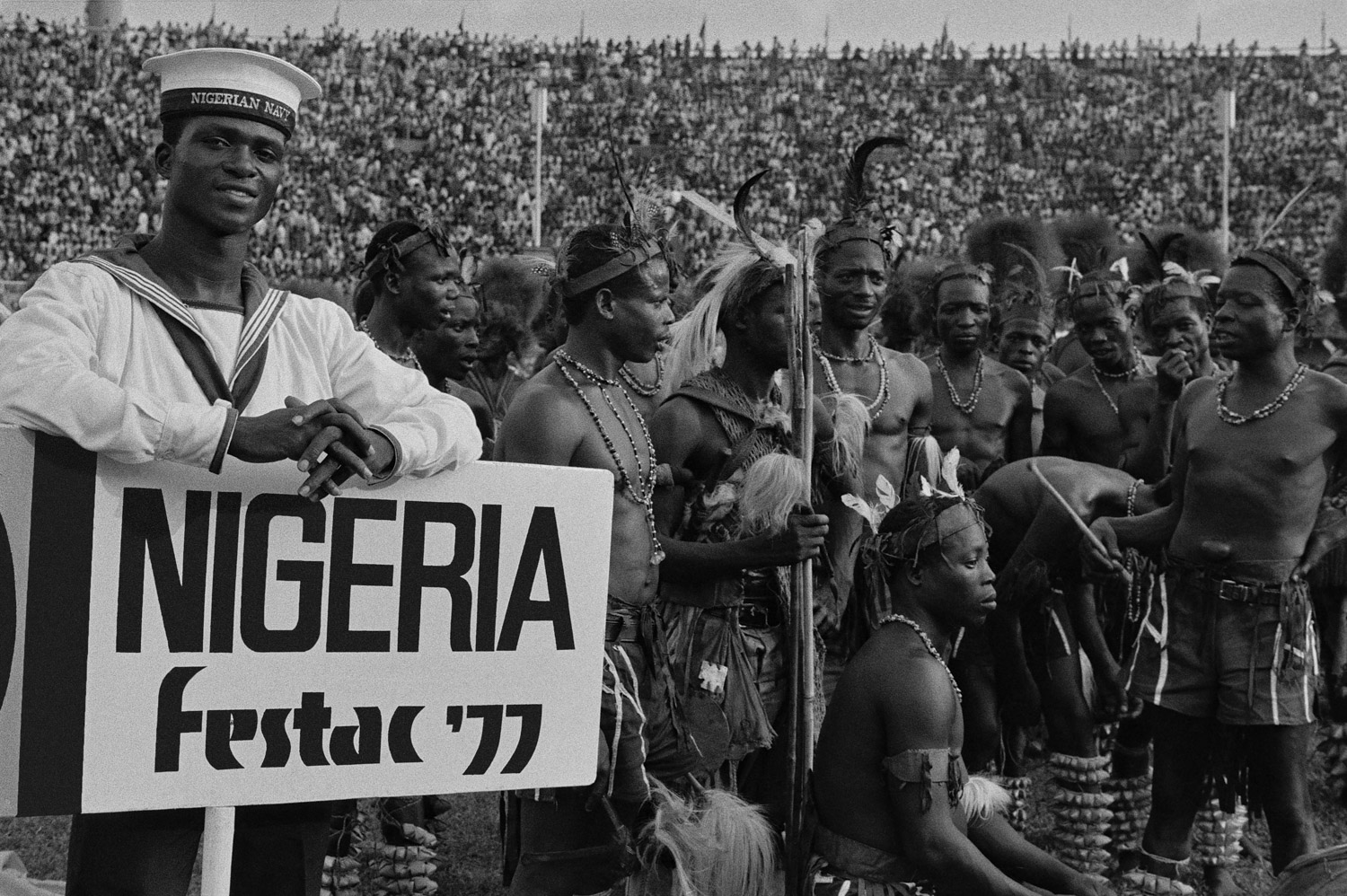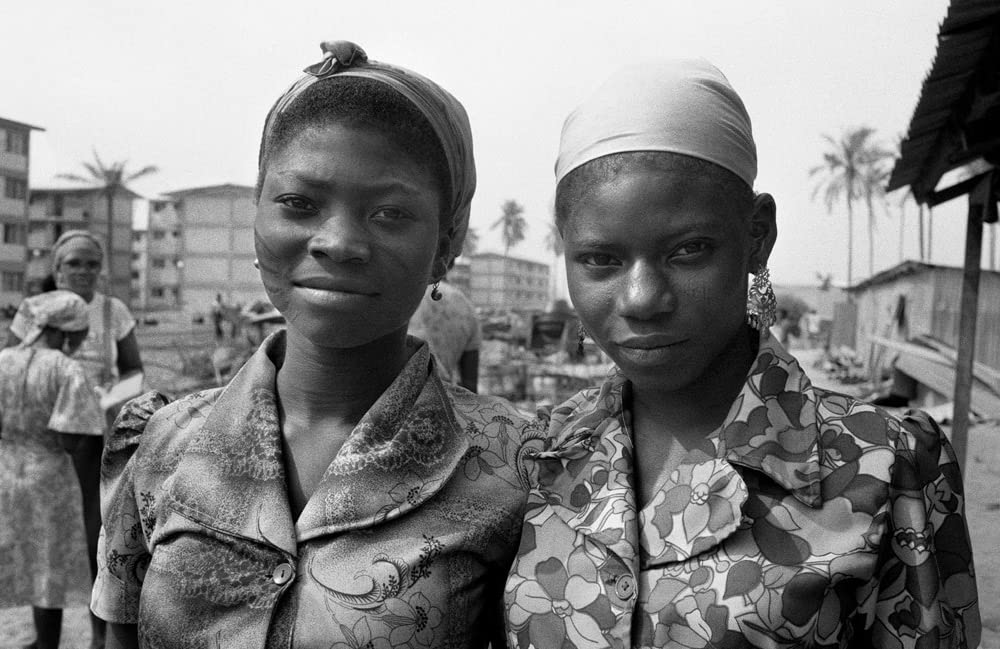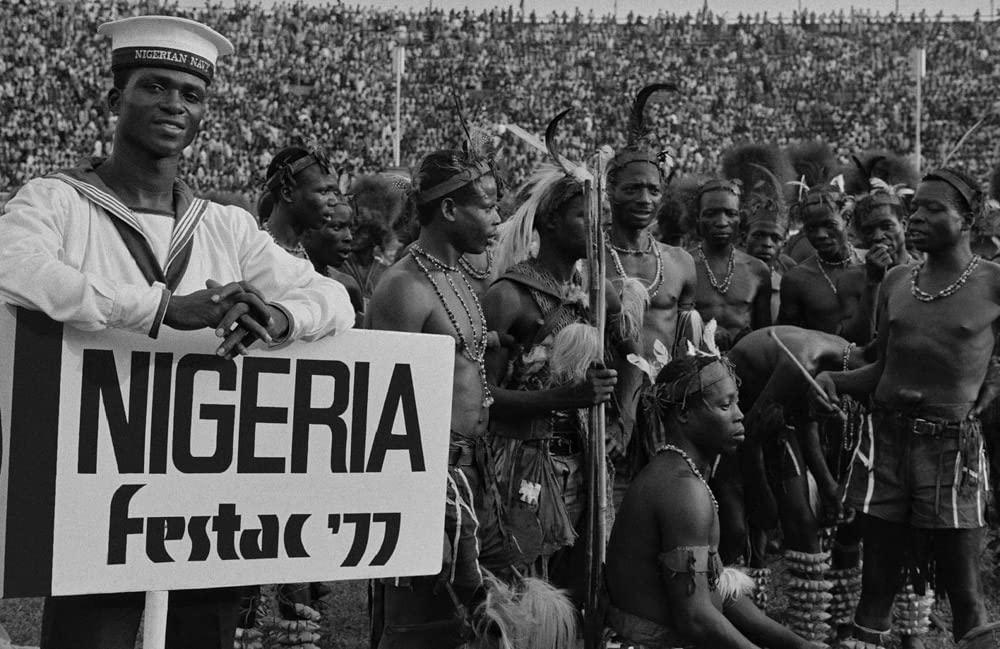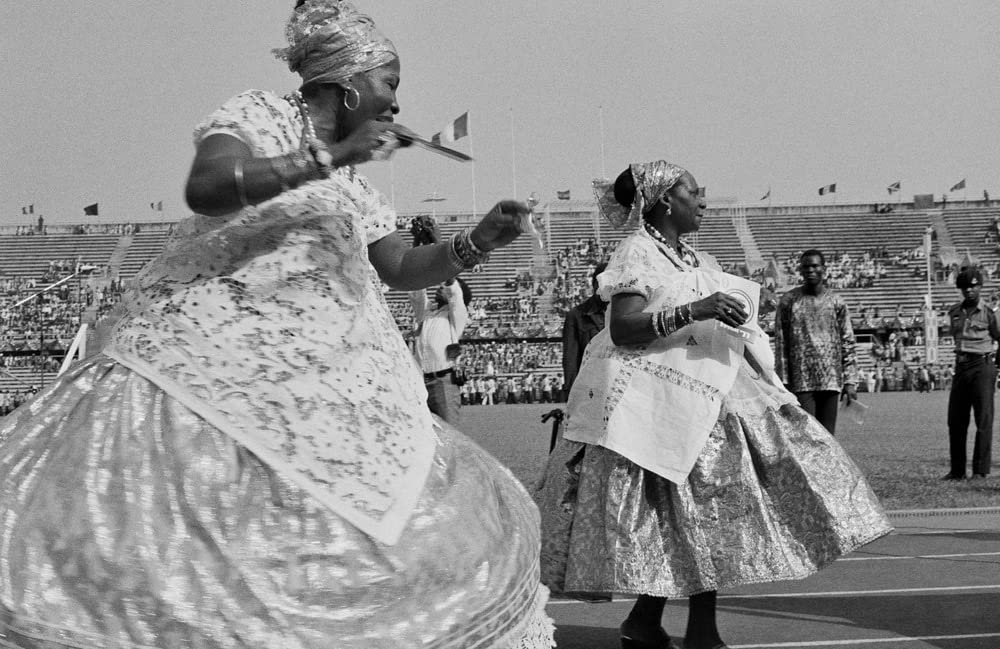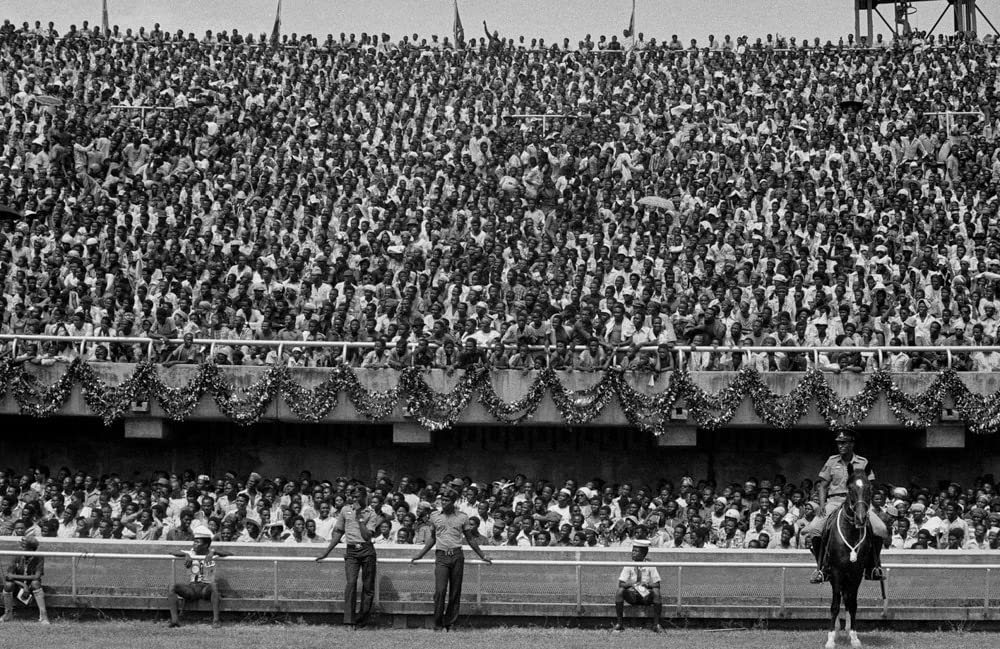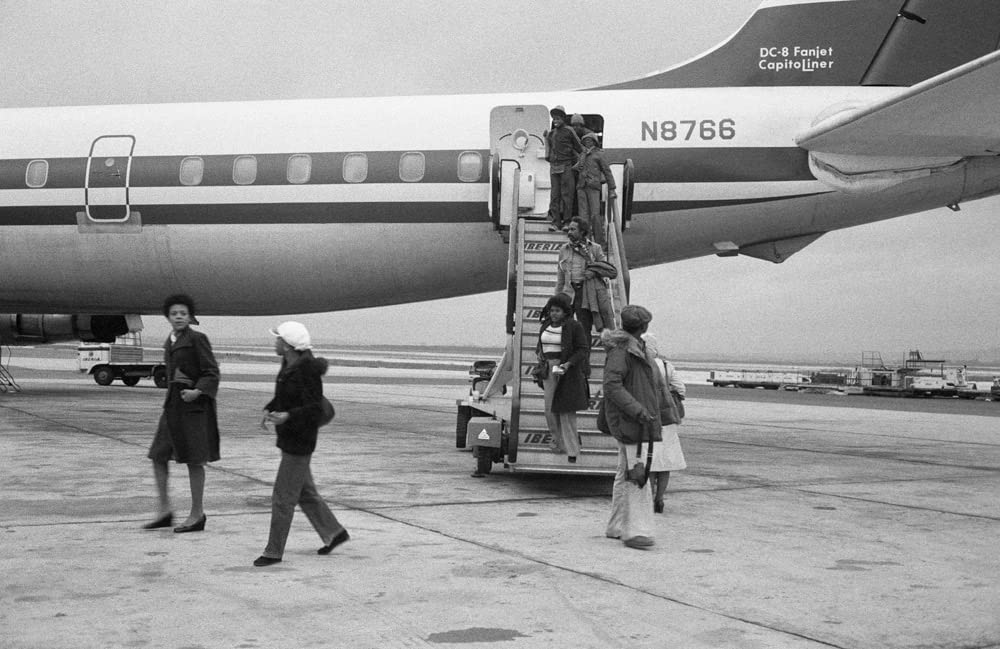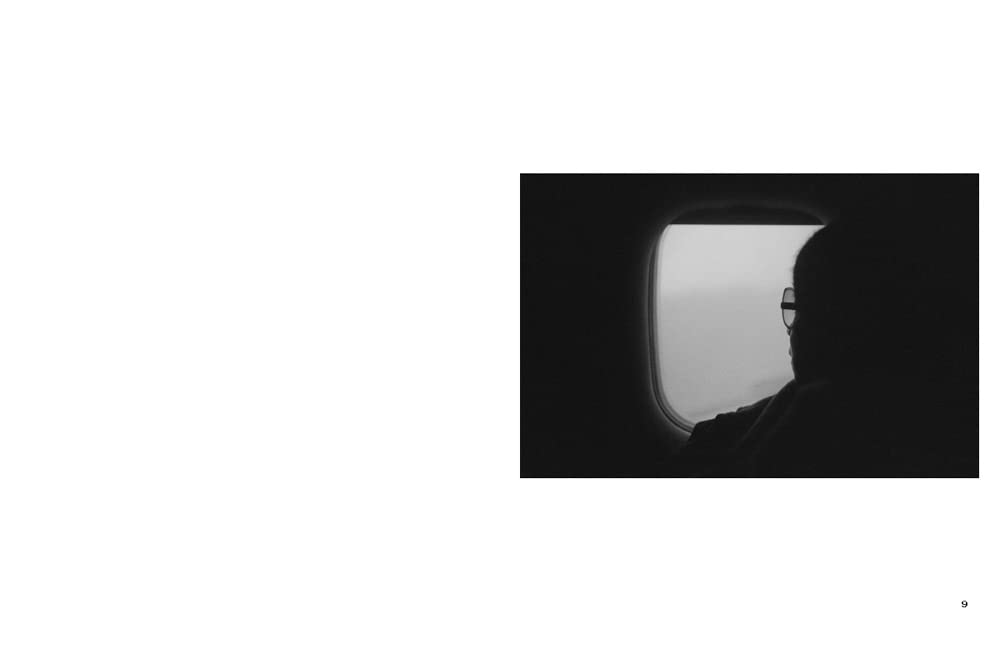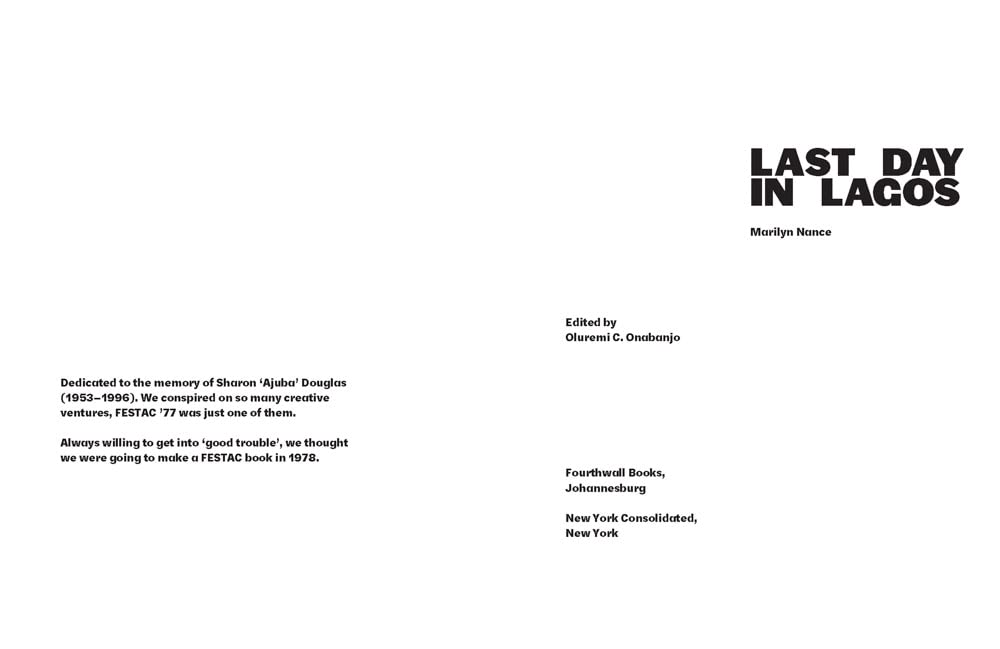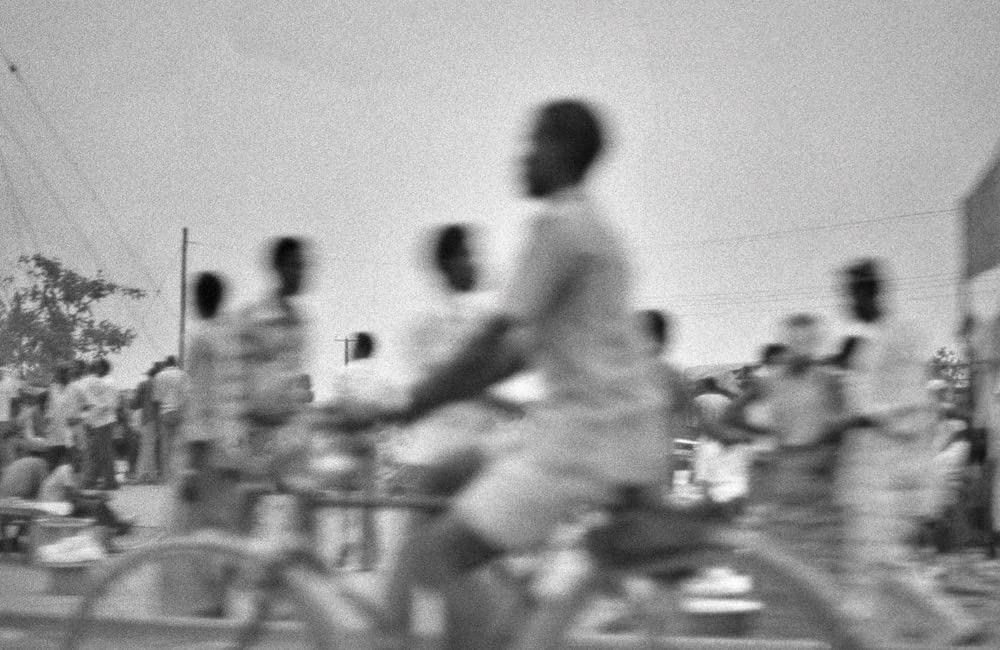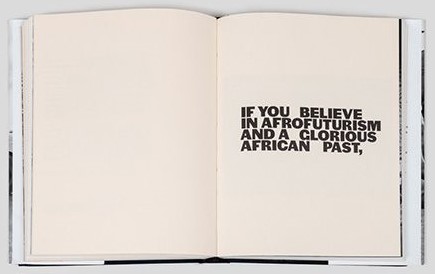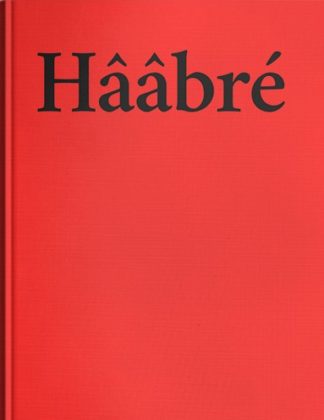Du 15 janvier au 12 février 1977, plus de 15000 artistes, intellectuels et interprètes de 55 nations du monde entier se sont réunis à Lagos, au Nigeria, pour le Second Festival mondial des arts et de la culture noirs et africains, aussi connu sous le nom de FESTAC 77. À l’apogée de la richesse pétrolière du Nigeria et après la puissante décennie de décolonisation du continent africain, FESTAC’77 a été le sommet de l’expression panafricaine. Parmi les musiciens, les écrivains, les artistes et les leaders culturels présents étaient Ellsworth Ausby, Milford Graves, Fela Anikulapo Kuti, Samella Lewis, Audre Lorde, Winnie Owens, Miriam Makeba, Valerie Maynard, Queen Mother Moore et Sun Ra.
Tout en servant de photographe pour le contingent américain de la délégation nord-américaine, la photographe Marilyn Nance de Brooklyn a réalisé plus de 1 500 images tout au long du festival, l’un des récits photographiques les plus complets de la FESTAC 77. Puisant dans les vastes archives de Nance, dont la plupart n’ont jamais été publiées, Last Day in Lagos relate l’intensité exubérante et la signification sociopolitique de cet événement extraordinaire.
Au cours des cinq dernières décennies, Marilyn Nance (née en 1953) a produit des images de moments uniques dans l’histoire culturelle des États-Unis et de la diaspora africaine. Nance est deux fois finaliste pour le prix W. Eugene Smith en photographie humaniste. Ses œuvres figurent dans les collections du Brooklyn Museum of Art, du Art Institute of Chicago, du Museum of Modern Art, du Smithsonian American Art Museum, du Schomburg Center for Research in Black Culture, du Virginia Museum of Fine Arts et de la Library of Congress. Et a été publié dans The World History of Photography, History of Women in Photography et The Black Photographers Annual. Elle vit à New York.
Marilyn Nance, est âgée de seulement 23 ans en 1977, lorsqu’elle a réalisé plus de 1 500 photographies de la FESTAC 77 à Lagos, au Nigeria, conclut son retentissant Afterword : « Si vous voulez voir à quoi cela ressemblait d’avoir 17 000 Africains rassemblés à travers le continent et la diaspora, vivant, partageant, pensant et jouant ensemble pendant 30 jours dans ce qui était essentiellement un Pan temporaire. »La nation africaine. Alors ce livre est pour vous. Je suis ici pour vous dire que c’est arrivé. J’étais là. C’est ce qu’ils ne vous ont pas enseigné en classe d’histoire de l’art — ou votre classe d’histoire des Noirs. Ces images du temps et du lieu reflètent mes notions romantiques d’unité panafricaine, ma nostalgie pour cette incroyable célébration de la culture mondiale, et l’allusion aux terreurs qui viendront après la fin du festival, pour cette raison, ce livre de FESTAC ’77 photographies est nommé Last Day in Lagos. » ; édité par Oluremi C. Onabanjo, avant-propos de Julie Mehretu. Texte de Antawan I. Byrd, Uchenna Ikonne, Tsitsi Ella Jaji, postface de Marilyn Nance, bibliographie de Zakiya Collier, Chisom Ilogu.
From January 15 to February 12, 1977, more than 15,000 artists, intellectuals and performers from 55 nations worldwide gathered in Lagos, Nigeria, for the Second World Black and African Festival of Arts and Culture, also known as FESTAC’77. Taking place in the heyday of Nigeria’s oil wealth and following the African continent’s potent decade of decolonization, FESTAC’77 was the peak of Pan-Africanist expression. Among the musicians, writers, artists and cultural leaders in attendance were Ellsworth Ausby, Milford Graves, Fela Anikulapo Kuti, Samella Lewis, Audre Lorde, Winnie Owens, Miriam Makeba, Valerie Maynard, Queen Mother Moore and Sun Ra.
While serving as the photographer for the US contingent of the North American delegation, Brooklyn-based photographer Marilyn Nance made more than 1,500 images throughout the course of the festival–one of the most comprehensive photographic accounts of FESTAC’77. Drawing from Nance’s extensive archive, most of which has never before been published, Last Day in Lagos chronicles the exuberant intensity and sociopolitical significance of this extraordinary event.
Over the course of five decades, Marilyn Nance (born 1953) has produced images of unique moments in the cultural history of the US and the African Diaspora. Nance is a two-time finalist for the W. Eugene Smith Award in Humanistic Photography. Her work is in the collections of the Brooklyn Museum of Art, the Art Institute of Chicago, the Museum of Modern Art, the Smithsonian American Art Museum, the Schomburg Center for Research in Black Culture, the Virginia Museum of Fine Arts and the Library of Congress, and has been published in The World History of Photography, History of Women in Photography and The Black Photographers Annual. She lives in New York.
Marilyn Nance, just 23 years old in 1977, when she made more than 1,500 photographs of FESTAC ’77 in Lagos, Nigeria, concludes her resounding Afterword: « If you want to see what it looked like to have 17,000 Africans gathered together from across the continent and the diaspora, living, sharing, thinking and performing together for 30 days in what was essentially a temporary Pan-African nation. Then this book is for you. I am here to tell you that it happened. I was there. This is what they didn’t teach you in Art History class—or your Black History class. These images of time and place reflect my romantic notions of Pan-African unity, my nostalgia for this incredible celebration of world culture, and hint at the terrors to come after the festival’s end, for this reason, this book of FESTAC ’77 photographs is named Last Day in Lagos. » ; edited by Oluremi C. Onabanjo, foreword by Julie Mehretu. Text by Antawan I. Byrd, Uchenna Ikonne, Tsitsi Ella Jaji, afterword by Marilyn Nance, bibliography by Zakiya Collier, Chisom Ilogu.


